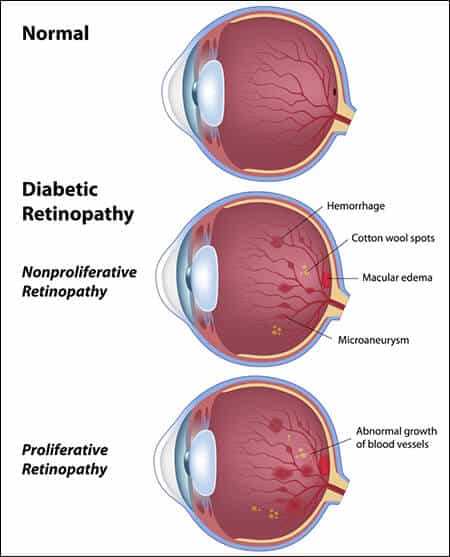
High blood glucose and high blood pressure from diabetes can affect four parts of your eye:
Diabetic Retinopathy
Diabetic Retinopathy is the medical term for the most common diabetes eye problem.
You may not have any signs of diabetes retina damage, or you may have one or more signs:
Retina damage happens slowly. Your retinas have tiny blood vessels that are easy to damage. Having high blood glucose and high blood pressure for a long time can damage these tiny blood vessels. First, these tiny blood vessels swell and weaken. Some blood vessels then become clogged and do not let enough blood through. At first, you might not have any loss of sight from these changes.
The stages of diabetic retinopathy are divided into two categories, Nonproliferative Retinopathy and Proliferative Retinopathy.

The doctors at The Reeves Eye Institute will detect diabetic retinopathy through regular eye exams with their diabetic patients. In the earliest stages of diabetes, eye exams once or twice a year may be acceptable. The doctors will be specifically looking for the leaking blood vessels that can lead to more advanced levels of this eye disease. A dilated eye exam will be performed by your eye doctor and retinal photographic equipment may be used.
